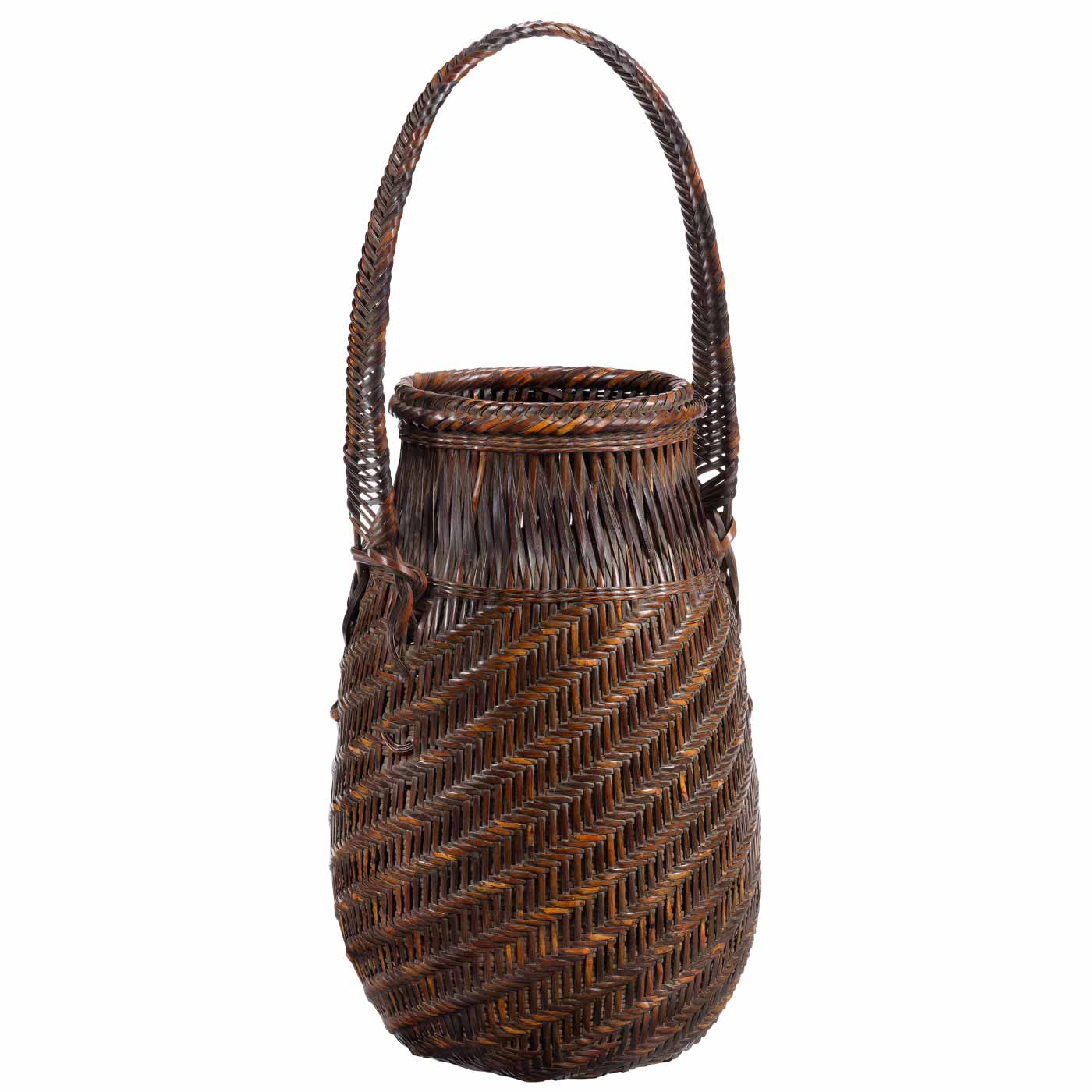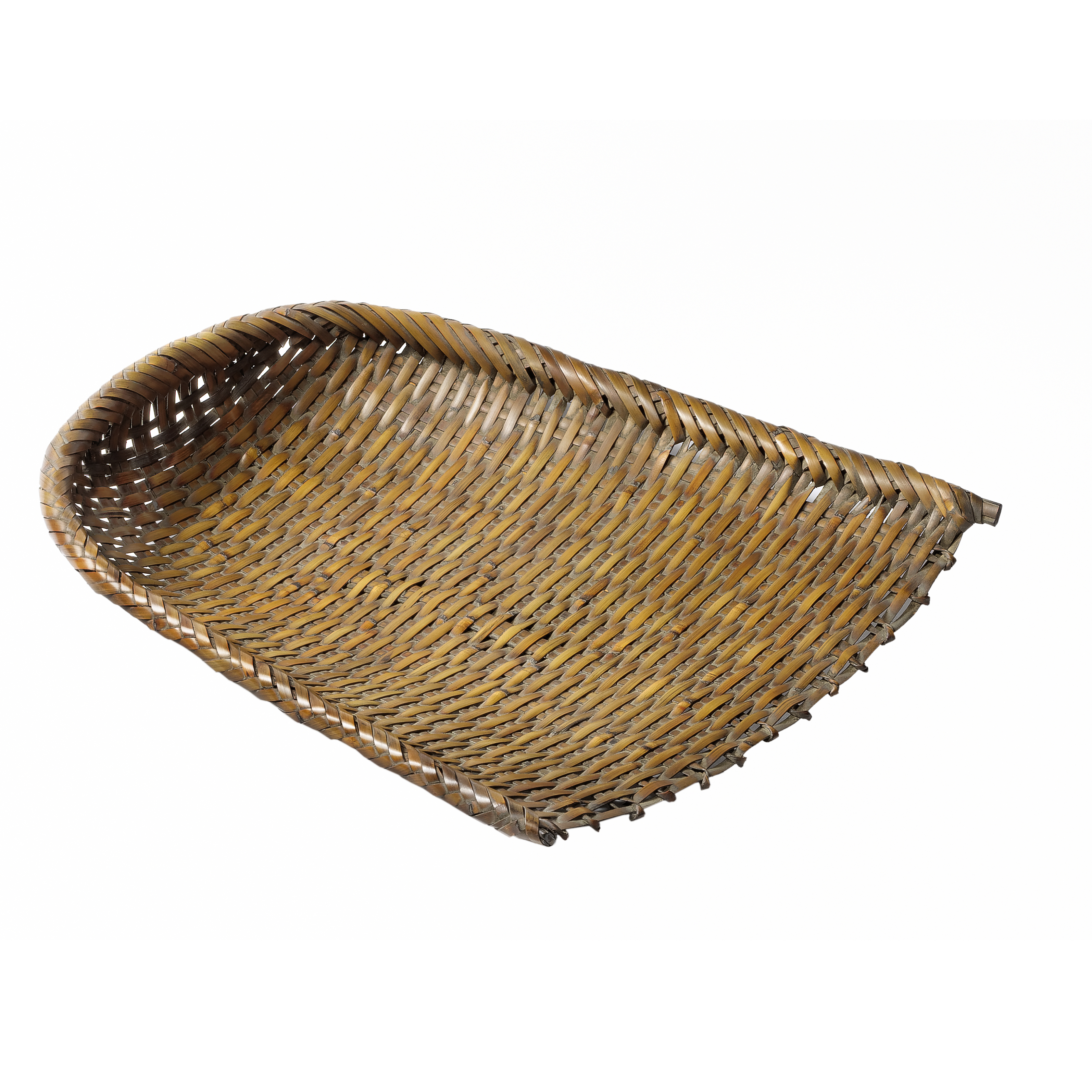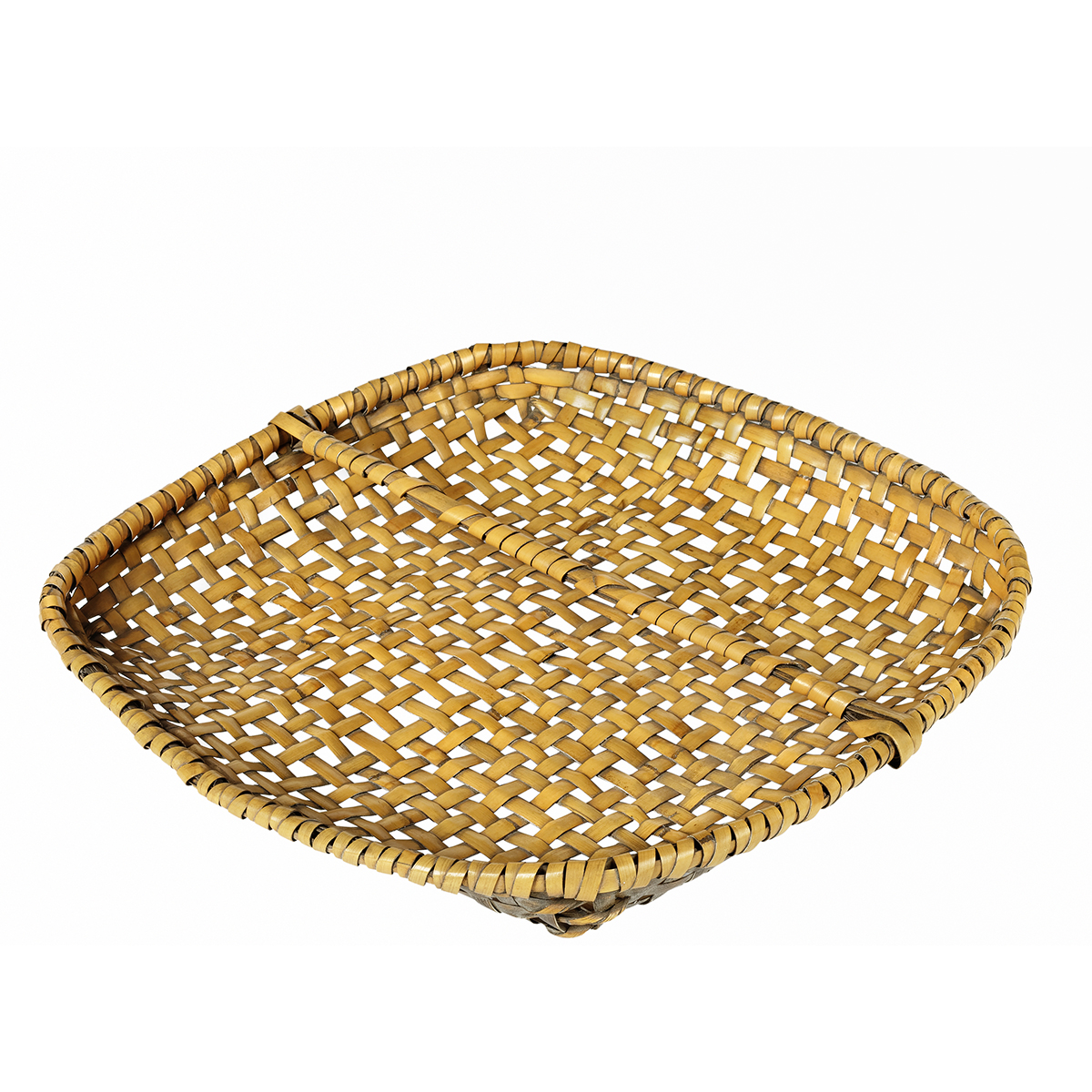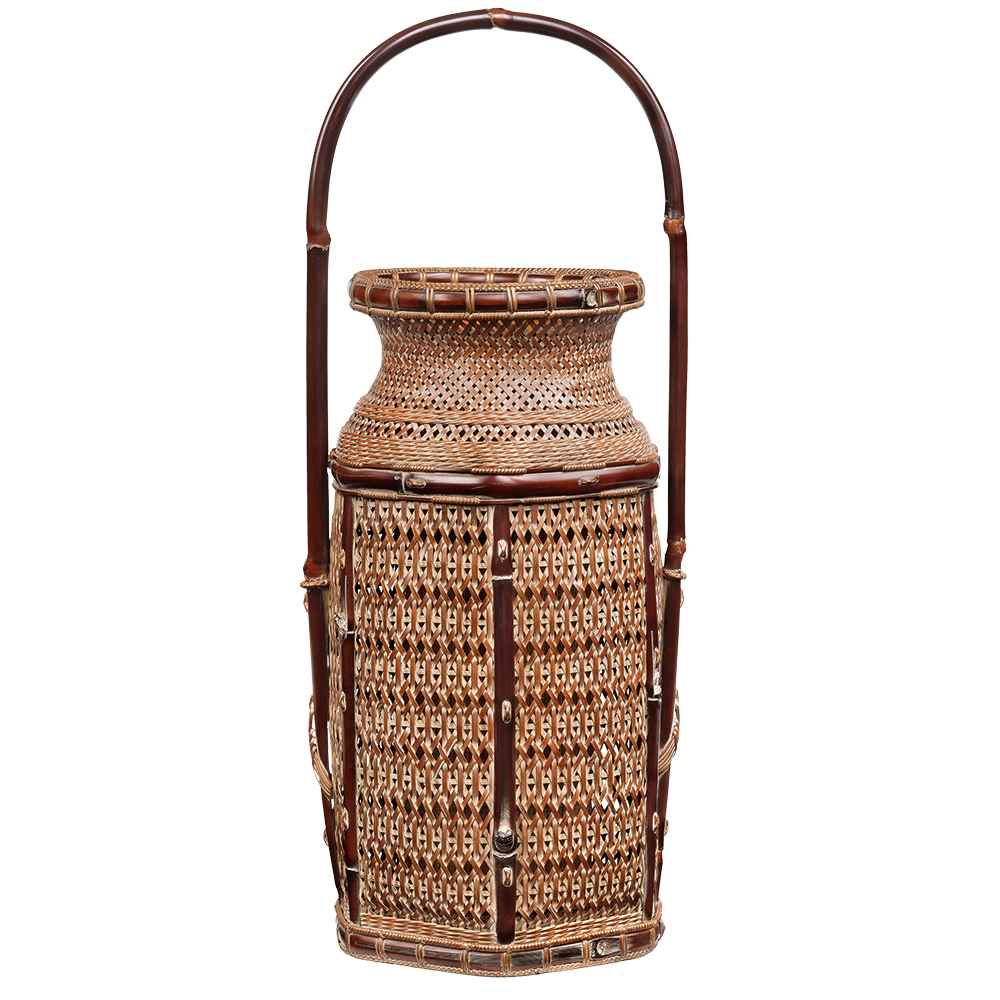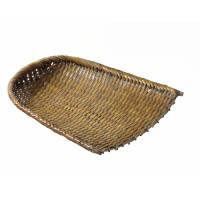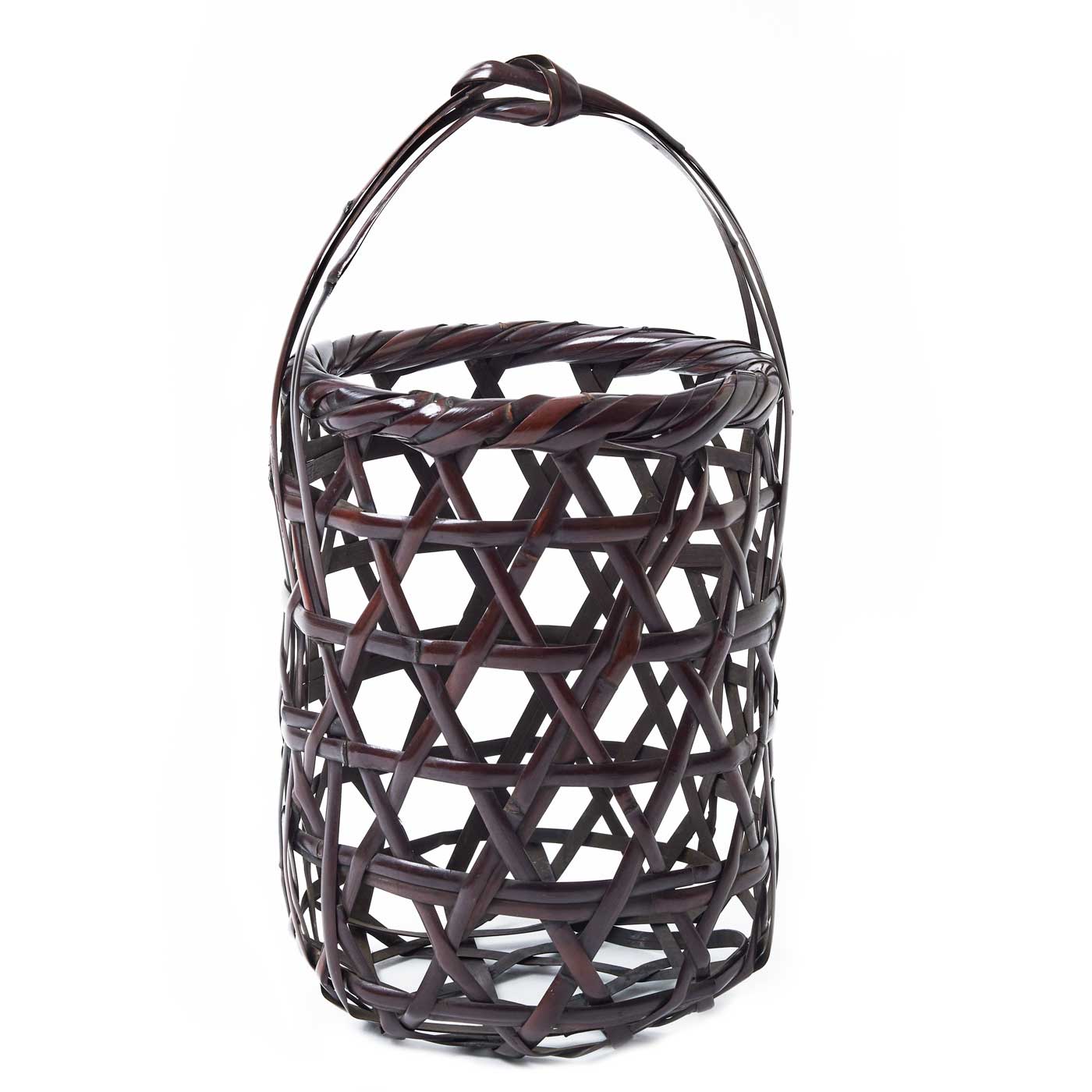Hōsai II
Description
Iizuka Hōsai II (1872-1934)
Hōsai I's first son, Iizuka Sadakichi, used the name of Kikuji from 1902, before taking up his father's name when the latter abandoned his gō (artist name).
In 1910 he left his native town of Tochigi and settled in Tokyo with his family.
He received the Silver Medal for his piece Oi at the Tokyo Taishō Exhibition in 1914. The following year he joined the family workshop in Tochigi with the commission, from the Ministry of the Imperial Household, to make bamboo chests (Daijyō-sai) to store the ceremonial robes for Emperor Taishō's enthronement ceremony.
At the International Exhibition of Modern Decorative and Industrial Arts in Paris in 1925, his work Oigatakikyoku, sponsored by the Japanese government, received an honorary prize. At this time, bamboo crafts were considered a commercial enterprise for industrial production and were therefore promoted abroad.
Although he was famous for his karamono Chinese-style baskets, Hōsai II produced innovative works using highly sophisticated weaving techniques.
